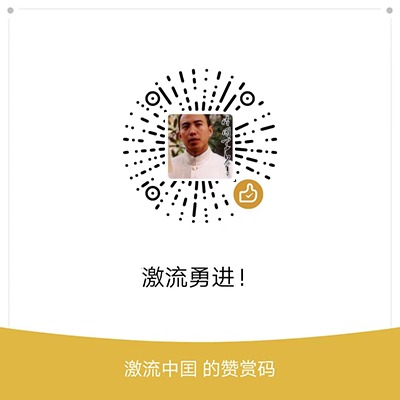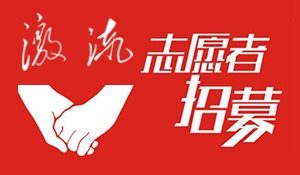中国官方一直宣称,农村经济的腾飞肇始自1978年邓小平重返政坛并开启市场化改革。在这种叙述中,邓小平的改革从文革造成的十年经济灾难中拯救了中国及其农村人口。他们常说,这场灾难的罪魁祸首包括:过分强调集体经济、通过政治运动迫害党员干部和知识分子、蔑视教育标准与教学机构、苛求平均主义(一大二公)等。然而本书中对即墨县的调查结果与官方叙述恰恰相反,即墨的农村经济腾飞始于文革时期而非市场化改革年代。在不到十年间,农业产值几乎翻了一番,农村工业体系也逐步建立起来,从而使得该县的农业经济有了根本性的改观。
即墨县的情况并非孤例,大部分中国农村的经济在1966~1976年间都得到了长足发展。当然,尽管农业产值的统计数据对官方叙事提出质疑,人们仍倾向于认为文革本身阻碍了经济发展,或者说农村经济“克服了文革带来的重重困难”发展起来。或许文革中的动乱的确没有对广大农村产生很多冲击。然而本书研究发现结论恰好与之相反:正是文革带来的政治与文化方面的变革促进了农村经济的发展。文革改造了中国的政治生活,允许普通村民监督党员干部,塑造了“干部参与体力劳动,村民参与经济决策”的集体劳动伦理,从而激发了村民的劳动积极性。文革还改造了传统中将大多数农村孩子拒之门外的精英主义教育体系,从广大农村发掘出大批人才。文革时期迅速建设了一大批农村学校,给乡下孩子们提供了学习读写与工农业生产技能的计划,有力地促进了经济发展。
即墨县的经济在1978年后继续增长,其部分原因可以归结为市场化改革、激励结构与经济可塑性方面的变革,为即墨带来吸引资本和市场投资的地理优势。然而我们有理由质疑官方机构宣称的市场改革是经济增长的唯一因素。文革时期开创的教育进步、基础设施发展、农村工业企业带来的经济增长,依然贡献了积极影响。我们一旦承认经济腾飞开始于集体经济时代,就必须重新审视市场化改革者们的论调。
在当下,市场改革时期即墨县经济的持续高速增长似乎进一步证明了,市场经济具有非凡的活力。可是,机械化的倒退、集体经济时代建立的灌溉系统的难于维护,无不令人怀疑,随着市场化发展起来的小规模农业生产能否维持农业的可持续发展。在去集体化的过程中,农村的医疗和教育水平逐渐下降,同样令人担忧。特别是农村教育机构的急速收缩将为经济发展带来严重且持续的阻碍。
即墨在文革时期的经验表明,集体经济同样具有高度的活力,可以实现经济迅速增长。为农业现代化做出贡献的水利、机械化、农业试验和化肥,无不得益于集体化组织下的资源集中。集体组织同样为农村工业提供了原始积累。黄宗智教授(Philip C. C. Huang)指出,集体经济才真正打破了长期以来中国农业的衰退趋势,使得农村经济开始取得发展,而这一根本性的转向发端于文革时期。
与市场经济类似,集体经济同样存在内部矛盾,而这些矛盾在中国的集体经济时代统统暴露出来了。不明确的激励机制、灵活性不够,都带来严重的经济问题。本书研究主要关注当时遇到的政治与文化方面的问题。我的主要论点之一是:集体经济无法在缺乏民主政治文化和普通工农享有自主权的机制下有效运行。中国共产党曾经有能力在短短数年间改革土地所有制和其他方面的生产关系,而现实表明政治文化方面的转变要比上述各方面都困难。
文革是对解决此问题所做出的一次尝试。文革是一场史无前例的、疾风暴雨式的、涉及面极其广泛的社会革命,目的在于改造群众的社会意识。它试图通过在集体内部挑战专制权威的方式强化集体组织。农村中广泛使用的大字报被证明是村民与村干部之间一种至关重要的政治沟通方式。大鸣、大放、大辩论给公共利益问题提上议事日程提供了一种公共论坛。农村地区的政治文化在很大程度上得到了改善。农民们不再像以前一样沉默寡言、逆来顺受,而是深受文革经验的鼓舞,要求村干部与自己保持一致。
文革时期集体组织的巩固在农村生活中塑造了一种极为独特的公共精神,村干部的腐败现象明显减少。县乡村各级干部被要求定期与村民一同劳动。到文革后期,干部和普通群众都已对这种实践方式习以为常。这种政治实践方式反过来又强化了当下的社会精神。困扰今日中国社会的官员腐败、卖淫嫖娼、毒品滥用、假货泛滥等罪恶现象在文革后期是完全不存在的。
更重要的是,文革批判了从工人农民中“择英才而育之”的旧式教育哲学,反对主要用死记硬背的方式学习刁钻的书本知识。通过教育革命,教育的概念得到了极大地扩展,它将生产劳动和其他相关活动也包括在内。教育不再仅限于坐在教室中学习书本知识,学习应该更多地在工厂、田野等地方展开。知识不再由教师垄断,工农兵同样也为学生提供丰富的经验知识。事实上,学生们也可能懂得一些老师不懂的知识。农村中的文革还批判了课堂上僵化专横的风气,试图让师生关系更加平等,鼓励教师关爱学生,学生尊重教师。但我通过自己的研究发现,彻底消除旧的风气实在是一件很艰难的事情。
随着邓小平重新掌权,他开始批判文革,彻底调转了变革的方向。邓小平拥有为所欲为的权力,但更重要的是,他受到各种文革中反动力量的支持——那些在文革中受到挑战的传统哲学与实践,以及种种试图恢复旧秩序的人物,无不是他的拥趸。
邓小平首先做的是宣布“大鸣、大放、大字报、大辩论”的“四大”为非法,并宣布不再进行任何政治运动,这似乎是向官员们保证:哪怕他们开始腐败,也不必再受到群众的监督。在这种情况下,许多官员开始重新滑向腐败的深渊。即墨县的很多官员纷纷表示,“有权不使,过期作废”。
在文革期间,机关干部及其子女和工农群众共同劳动,所有人都认为这样做是理所应当的。而随着政治气候的改变,官员们不再和农民一起劳动,开始为自己的家庭谋取更多私利。他们给自己的子女寻找更好的工作,将其安排到重要岗位上。改革开放以来中国官员就是这样开始腐败的。
邓小平恢复了旧式的教育理念,文革期间的教育改革成果一夜之间被抹除殆尽。他得到了坚持旧的教育思想和实践的保守派的支持。许多教师开始觉得自己在文革中受到了虐待。其实当时教师与包括其学生在内的欠教育阶层之间的差距已明显减小。而事实证明,儒家“学而优则仕”、“万般皆下品,惟有读书高”的理念很容易反弹。许多旧知识分子不喜欢让教育与社会相互影响的看法。许多农民和工人开始渴望让自己的子女通过教育改变命运,跻身上流社会。因此,邓小平对文革中教育改革的指责引起了这些人的广泛共鸣。
这是一种超越个人层面的视角,人们通常要花较长时间才能意识到不同的政治、经济和文化政策将产生的社会后果。本书试图从这一视角探索由中国文化大革命的反对者和支持者推行的政策。
中国政府对文革的官方评价支持当前国际上流行的一种观点:实现发展与维持社会平等是不可兼得的。这种观点在中国和世界范围内的流行,很大程度上是由于它很容易被那些害怕社会公正的人们所接受。本书对即墨县历史的研究挑战了这一观点。在文革时代与其后市场化改革的20年间,即墨县经历了两种不同的农业发展道路。这两种道路的差别不在于发展与停滞之间的差别,而在于不同发展类型之间的差别。我希望读者能从本文描绘的即墨县在文革时期的经验中认识到,教育并为底层民众赋予应得权力,同样能促进经济发展。追求社会公正与追求经济发展之间不是非此即彼的选项,需要选择的不过是要不要追求社会公正。
参考文献
中文文献
巴县县志委员会. 巴县县志 石家庄:河北人民出版社,1989.
中国共产党中央委员会. “建国以来若干历史问题的决议.” 中国共产党文献选编. 北京:人民出版社,1983.
川沙县志委员会. 川沙县志 上海:上海人民出版社,1992.
福山区志委员会. 福山区志 济南:齐鲁出版社,1989.
海阳县志委员会. 海阳县志 海阳:海阳出版社,1987.
黄骅县志委员会. 黄骅县志 黄骅:海潮出版社,1990.
即墨县志委员会(地方志委员会),即墨县志. 即墨:印刷厂,1987. (内部版)第3卷,居民,第5卷,农业,第6卷,水利,第7卷,渔业,第8卷,工业,第9卷,乡镇企业,第19卷,党派社团,第20卷,政权政协,第27卷,教育,第28卷,科技,第34卷,杂记,第35卷,补记.
即墨县志委员会(地方志委员会),即墨县志 北京:新华出版社,1991.
即墨地方志委员会(地方志委员会),即墨大事记 即墨:新华印刷厂,1987.
教育革命文选(网络文档)
临淄区志委员会. 临淄区志 北京:国际文化出版社,1988.
刘永佶. 中国官文化的奠基者与批判家──孔子与毛泽东 济南:山东人民出版社,1994.
毛泽东. 毛泽东选集 北京人民出版社,1964.
眉山县志委员会. 眉山县志 成都:四川人民出版社,1992.
平度县志委员会. 平度县志 青岛:包装出版社,1987.
浦江县志委员会. 浦江县志 杭州:浙江人民出版社,1985.
齐河县志委员会. 齐河县志 北京:正华出版社,1988.
青州市志委员会. 青州市志 天津:南开大学出版社,1988.
栖霞县志委员会. 栖霞县志 济南:山东人民出版社,1990.
Sunxian Xianzhi Committee. Sunxian Xianzhi (Sun Xian Local Records) Zhengzhou: Zhongzhou Guji Press, 1990.
通县县志委员会. 通县县志 北京:正华出版社,1989.
王年一. 大动乱的年代 河南:人民出版社,1993.
无产阶级文化大革命胜利万岁 (网络文档)
无产阶级文化大革命重要社论文章汇编 (网络文档) 第1卷至第6卷
严家其,高皋. 文化大革命十年史 天津:人民出版社.
阳谷县志委员会. 阳谷县志 北京正华出版社,1990.
盐山县志委员会. 盐山县志 天津:南开大学出版社,1991.
淄川县志委员会. 淄川县志 济南:齐鲁出版社,1990.
英文文献
Ballantine, Jeanne H. Schools and Society. London: Mayfield Publishing Company, 1985.
Bannister, Judith. China’s Changing Population. Stanford: Stanford University Press, 1987.
Barcata, Louis. China in the Throes of the Cultural Revolution. New York: Hart Publishing Company, Inc. 1968.
Barnett, A. Doak. China After Mao. Princeton: Princeton University Press, 1967.
Bamouin, Barbara and Yu Changgen. Ten Years of Turbulence- Chinese Cultural Revolution. London: Kegan Paul International, 1993.
Baum, Richard. Prelude to Revolution. New York: Columbia University Press, 1975.
Bennett, Gordon, and Ronald Montaperto, Red Guard, New York: Anchor Books, 1972.
Blecher, Marc. China-Politics, Economics and Society. London: Frances printer, 1986.
Borthwick, Sally. Education and Social Change in China. Stanford: Stanford University of Stanford Press, 1983.
Bramall, Chris. In Praise of Maoist Economic Planning. Oxford: Clarendon Press, 1993.
Camoy, Martin and Joel Samoff. Education and Social Transition in the Third World. Princeton: Princeton University Press, 1990.
Chao, Tsung. An Account of the Cultural Revolution. Hong Kong: Union Press, 1971.
Chen, Jerome. Mao and the Chinese Revolution. London: Oxford University Press, 1965.
Chesneaux, jean. “My Forty Years of Chinese History." The Australian Journal of Chinese Affairs, No.22, July 1989.
Chung, Hua-min and Arthur C. Miller. Madame Mao. Hong Kong: Union Research Institute, 1968.
Dietrich, Craig. People’s China. Oxford: Oxford University Press, 1986.
Dittmer, Lowell. Liu Shao-chi and the Chinese Cultural Revolution-The. Politics of Mass Criticism. Berkeley: University of California Press, 1974.
Du, Ruqing. Chinese Higher Education: A Decade of Reform and Development (1978-1988) London, 1992.
Epstein, Irving. “Class and Inequality in Chinese Education," Compare, Vol. 23, No. 2 1993. ppl31-147.
—Chinese Education: Problems, Policies and Prospects. New York: Garland Publishing, Inc. 1991.
Fan, K. H. and K. T. Fan. From the Other Side of the River. New York: Anchor Books, 1975.
—The Chinese Cultural Revolution: Selected Documents. New York: MR Press, 1968.
Foley, Griff. “A ‘democratic moment’: Political Education in the Chinese Liberation Struggle," International Journal of Lifelong Education. Vol 12, No. 4 1995 pp323-342.
Friedman, Edward, Paul G. Pickowicz, and Mark Seldcn. Chinese Village, Socialist State, New Haven: Yale University Press, 1991.
—“The Flaws and Failure of Mao Zedong’s Communist Fundamentalism," The Australian Journal of Chinese Affairs. No. 18, Jul 1987.
—“(Mao) The Innovator." in Dick Wilson Ed. Mao Tsetung in the Scale of History. London: Cambridge University Press, 1977.
Gao, Yuan. Born Red. Stanford: Stanford University Press, 1987.
Hayhoe, Ruth. Education and Modernization—Chinese Experience. New York Pergamon Press, 1992.
Hsu, Immanuel C.Y.. China without Mao, Oxford: Oxford University press, 1982.
Huang, Philip C. C. “Rural Class Struggle in the Chinese Revolution— Representational and Objective Realities from the Land Reform to The Cultural Revolution.” Modem China. Vol. 2 l,No. 1, January 1995. 105-143.
—The Peasant Family and Rural Development in the Yangzi Delta, 1350-1988. Stanford: Stanford University Press, 1990.
Karsnow, Stanley. Mao and China, New York: The Viking Press, 1972.
Kelliher, Daniel. Peasant Power in China. New Haven: Yale University Press, 1992.
Kwong, Julia. “In Pursuit of Efficiency," Modern China, Vol. 13, No. 2, April 1987 226-256.
-Chinese Education in Transition. Montreal: McGill-Queens University
Press, 1979.
-Cultural Revolution in China’s Schools, May 1966-April 1969. Stanford: Hoover Institution Press, 1988.
Lampton, David. Policy Implementation in Post-Mao China. Berkeley: University of California Press, 1987.
Leary, Orcg and Andrew Watson. “Current Trend of China’s Agricultural Strategy.” The Australian Journal of Chinese Affairs. No.4 (1988): 119-166.
Leys, Simon. The Burning Forest. New York: Henry Holt and company, 1986.
- Broken Images. New York: St. Martin’s Press, 1979.
The Chairman’s New Clothes—Mao and The Cultural Revolution. New York: Allison and Busby, 1981.
Liang, Heng and Judith Shaprio. Son of Revolution. New York: Afred A Knopf, 1983.
Lieberthal, Kenneth. Governing China: From Revolution Through Reform. New York: W.W. Norton & Company, Inc. 1995.
Lifton, Robert Jay. Revolutionary Immortality—Mao Tse-Tung And the Chinese Cultural Revolution. New York: Random House, 1968.
Thought Reform and the Psychology of Total ism. New York: W. W. Norton & Company. Inc. 1961.
Liu, T. C. and Wei-ming Tu. Traditional China. Englewood Cliffs: Prentice-Hall, 1970.
Madsen, Richard. Morality and Power in a Chinese Village, Berkeley: University of California Press, 1984.
MacFarquhar, Roderick. Origins of the Cultural Revolution, Vol. 2: The Great Leap Forward 1958-1960, New York: Columbia University Press, 1983.
Mauger, Peter. “Changing Policy and Practice in Chinese Rural Education.” China Quarterly vol. 93 No. 2. 139-148.
Meisner, Maurice. 'Mao’China, New York: The Free Press, 1979.
Mosher, Steven W. Broken Earth—The Rural China. New York: The Free Press, 1983.
Munro, Donald. The Concept of Man in Contemporary? China. An Arbor: the University of Michigan Press, 1977.
Nathan, Andrew. China’s Crisis—Dilemmas of Reform and Prospects for
Democracy. New York: Columbia University Press, 1990.
Ng, Pedro Pak-Tao. “Open-Door Education in Chinese Communes—Rationale, Problems, and Recent Changes,” Modern China. Vol. 6 No. 3, July 327-356.
Nie, Cheng. Life and Death in Shanghai. New York: Grove Press, 1987.
Obrien, Kevin and Liangjiang Li. “Politics of Lodging Complaints in Rural China, China Quarterly, No. 143; September, 1995.
Pepper, Suzanne. Radicalism and Education Reform in 20th Century China. Oxford:Cambridge University Press, 1996
Pyc, Lucian. The Spirit of Chinese Politics. Cambridge: Harvard University Press, 1992.
—“An Introductory Profile: Deng Xiaoping and China’s Political Culture” China Quarterly, No. 135, September, 1993. 412-443.
—“Rethinkingthe Man in the Leader,” The China journal, January 1996.107-113.
Rafferty, Max. Suffer, Little Children. New York: Signet Books, 1963,
Reed, Gay Garland. “Looking in the Chinese Mirror: Reflecting on Moral-Political Education in the United States,” Educational Policy Vol. 9, No. 3 Sept. 1995 pp.244-259.
Rosen, Stanley. “Obstacles to Educational Reform in China, “Modern China, Vol. 8 No. 1 January 1982, 3-40.
—“Recentralization, Decentralization and Rationalization—Deng Xiaoping’s Bifurcated Educational Policy.” Modern China Vol. 11 No.3 July 1985, 301-346.
—“Restoring Key Secondary Schools,” David M. Lampton Ed. Policy Implementation in Post-Mao China. Berkeley: University of California Press, 1987,321-354.
Rousseau, Jean-Jacques. Emile or On Education. New York: Basic Books, 1979.
Rozman, Gibcrt. Ed. The Modernization of China, New York: The Free Press 1981.
School Boys of Barbiana. Letter to A Teacher. New York: Vintage Books, 1971.
Shue, Vivienne. The Reach of the State: Sketch of the Chinese Body Politic, Stanford: Stanford University Press, 1988.
Solomon, Richard H. Mao’s Revolution and the Chinese Political Culture. Berkeley: University of California Press, 1971.
Stevenson, Harld and James W. Stigler. The Learning Gap: Why our Schools are Failing and What We can Learn from Japanese and Chinese Education. New York: Summit Books, 1992.
Su, Zhixin. “A Critical Evaluation of John Dewey’s Influence on Chinese Education." American Journal of Education. 103, May 1995. 302-325.
—“Science Education Goals and Curriculum Designs in American And Chinese High Schools." International Review of Education. Vol. 41, No. 5 pp 371-388.
Terrill, Ross. China Profile. New York: Friendship Press, 1969.
—Ed. The China Difference, New York: Harper and Row, Publishers, 1972.
Thurston, Anne. Enemies of the People. New York: Alfred Knopf, 1987.
Walder, Andrew. “Actually Existing Maoism.” The Australian Journal of Chinese Affairs No. 19, July 1988. pp 155-166.
White, Lynn. T. Policies of Chaos. Princeton: Princeton University Press, 1989.
Wielemans, Willy and Pauline Choi-Ping Chan. Education and Culture in Industrial Asia. Leuven University Press, 1992.
Xu, Xiu. “Reflections on the Reform of Admission to Colleges andUniversities and the job Assignment System for Their Graduates.” Studies in Chinese Higher Education. No.4, 1992.44-48.
Yan, Yunxiang. “The Impact of Rural Reform on Economic and Social Stratificationin a Chinese Village," The Australian Journal of Chinese Affairs, No. 27, January 1992.
Yin, Dalu. “Reforming Chinese Education: Context, Structure and Attitudes in the 1980s,” Compare. Vol. 23, No. 2 1993 115-130.
Yue, Daiyun. To the Storm. Berkeley: University of California Press, 1987.
Zhelokhovtsev, A. The Cultural Revolution, A Close up. Moscow: Progress Publishers, 1975.
Zhou, Kate Xiao. How the Farmers Changed China. Boulder: Westview Press, 1996.
索引
Abusive tendencies, 31
滥用趋势,31
Agricultural cooperatives, 39, 40
农业合作社,39,40
Agricultural experimentation, 128
农业实验,128
Agricultural hukou, 36
农村户口,36
Agricultural involution, 146
农业萎缩,146
Animal husbandry, 138
畜牧业,138
Anti-party elements, 51
反党分子,51
Back door, 162
后门,162
Bao huang pai, 56
保皇派,56
Baptism of Cultural Revolution, 135
文化大革命的洗礼,135
Barefoot doctors, 144
赤脚医生,144
Beijing opera, 64
京剧,64
Bernstein, Thomas, 36
托马斯·伯恩施坦,36
Big character posters, 50
大字报,50
Big stools, 32
大粪,32
Biye song, 31
毕业歌,31
Black gang elements, 50
黑帮分子,50
Bourgeois line of development, 123
资本主义路线,123
Capitalist roaders, 54
走资派
CCP Central Committee, 50
中国共产党中央委员会,50
CCP, 7, 8, 9, 10, 11, 12
中国共产党,7,8,9,10,11,12
Changzhang fuzezhi, 154, 155
厂长负责制,154,155
Chemical fertilizers, 132
化肥,132
Chicken, 139
鸡肉,139
China’s political culture, 13
中国政治文化,13
Chinese Civil War, 7
国共内战,7
Chinese New Year, 11, 136
农历新年,11,136
Chongqing, 14
重庆,14
Chuanlian, 62, 63, 64
串联,62,63,64
Chun Miao, 144
春苗,144
Civil servants for emperors, 31
皇帝的私人奴仆(太监和宫女),31
Class representatives, 110
阶级代表,110
Code of conduct, 13
Collective economies, 172
集体经济,172
Collective work ethics, 123
集体工作道德,123
Collectivization, 15
集体化,15
Communist forces, 7
共产主义力量,7
Communist legitimacy, 11
共产主义正统性,11
Communist Party platform, 71
共产党党章,71
Communist Youth Leagues, 57, 58
共产主义青年团,57,58
Confucian culture, 70
儒家文化,70
Confucius, 122
孔子,122
Corruption and abuse of power, 12
腐败与滥用权力,12
County party committee, 89
县党委会,89
County Public Security Bureau, 52
县公安局,52
County’s people’s hospitals, 45
县人民医院,45
Creative thinkers, 31
创造性思想家,31
Critical attitude, 110
批判性态度,110
Crop failures, 40
作物歉收,40
Cultural Revolution, 1, 6, 12, 25, 34, 35, 58, 59, 64, 64-68, 124, 128, 130
文化大革命,1,6,12,25,34,35,58,59,64,64-68,124,128,130
Culture of submissiveness, 18
顺从文化,18
Curricula, 104
全部课程,104
Da bianlun, 152
大辩论,152
Da fang, 152
大放,152
Da ming, 152
大鸣
Daming defang yundong, 16
大鸣大放运动,16
De facto constitution, 65
事实上的宪法
Democratic personage, 14
民主人士,14
Democratic political culture, 172
民主政治文化,172
Deterioration of order and discipline, 111
纪律与秩序的恶化,111
Developmental stages, 30
发展阶段,30
Difangzhi, 13
地方志,13
Dingzihu, 166, 167
钉子户,166,167
Division of land, 158
坟地,158
Economic catastrophe, 1
经济灾难,1
Economic pragmatism, 1
经济实用主义,1
Educated youth, 113
知识青年,113
Education and production, 127
教育与生产力,127
Educational Expenditures, 24
教育开销,24
Educational inequality, 23,33
教育不平等,23,33
Educational reforms, 107
教育革命,107
Egalitarianism, 1
平等主义,1
Electric pumps, 42
电动泵,42
Empowerment, 58, 62, 64
授权,58,62,64
Entrance examination, 27, 30
入学考试,27,30
Experimental teams, 133
实验团队,133
Farm machines, 131
农业机械,131
Fish ponds, 135
鱼塘,135
Five guarantees, 44, 163
五保,44,163
Foreign subjugation and humiliation, 33
外侮,33
Free universal education, 23
免费普及教育,23
Fukuafeng, 47
浮夸风,47
Ganbu zhengfeng yundong, 14
干部整风运动,14
Gongcheng, 13
工程,13
Grain production, 133
粮食产量,133
Grain ration paper, 17
粮票,17
Great Leap Forward, 3, 4, 14, 15, 16, 17, 25, 34, 41, 126
大跃进,3,4,14,15,16,17,25,34,41,126
Guan guan xiang hu, 18
官官相护,18
Hemp, 138
麻绳,138
High school education, 28
高中教育,28
House wives, 136
家庭主妇,136
Huan xiang tuan, 8, 151
还乡团,8,151
Huang Yanpei, 14
黄炎培,14
Huang, Philip, 150
黄宗智(菲利普·黄)
Hukou, 36
户口,36
Hunan Peasant Congress, 23
湖南农会,23
Illiterate people, 33
文盲,33
In service-training, 144
在服务培训方面,144
Independent Kingdom, 56
自由王国,56
Individual rights, 1
个人权利,1
Infrastructure improvement, 41-42
基础设施改善,41-42
International market, 139
国际市场,139
Involutionary growth, 146
内卷增长,146
Irrigation projects, 42
水利工程,42
Irrigation, 129
水利,129
Ji Chuanfu, 12
季传福(冀东副民兵队长),12
Jidong, 12
冀东,12
Jimo County Production Office, 121
即墨县生产办公室,121
Jimo County, 2-5
即墨县,2-5
Job security, 157
就业保障,157
Junior primary education, 26
初小教育,26
Kaimen banxue, 106
开门办学,106
Kao tian chi fan, 40
靠天吃饭,40
Key schools, 23, 24
重点学校,23,24
Korea War, 12
朝鲜战争,12
Kouliang, 15
口粮,15
Land improvement projects, 130
土地改良项目,130
Land reform, 8, 39
土地改革,8,39
Landlord gentry, 13
地主士绅,13
Lao sanpian, 64
老三篇,64
Large wells, 129
大井,129
Legacy of political empowerment, 167
政治赋权的遗产,167
Liang; Shuming, 11
梁漱溟,11
Life expectancy, 145
预期寿命,145
Lin Biao, 123
林彪,123
Linye dui, 136
林业队,136
Linye, 135
林业,135
Local initiative, 146
地方倡议,146
Long March, 7
长征,7
Lower middle school, 27
初中,27
Manual labor, 109
体力劳动,109
Mao nostalgia, 72
对毛泽东的怀旧,72
Mao re, 72
毛泽东热,72
Mao Zedong Thought, 59
毛泽东思想,59
Mao Zedong, 11, 38
毛泽东,11,38
Mao’s personality cult, 72
对毛泽东的个人崇拜,72
Mao’s quotations, 68
毛主席语录,68
Maoist code of conduct, 152
毛泽东主义者行为准则,152
Mass associations, 55, 58
群众串联,55,58
Mass organizations, 55
群众组织,55
长按二维码支持激流网

为了避免失联请加+激流网小编微信号jiliu1921
 (作者:韩冬屏。翻译:激流网翻译组。责任编辑:邱铭珊)
(作者:韩冬屏。翻译:激流网翻译组。责任编辑:邱铭珊)





